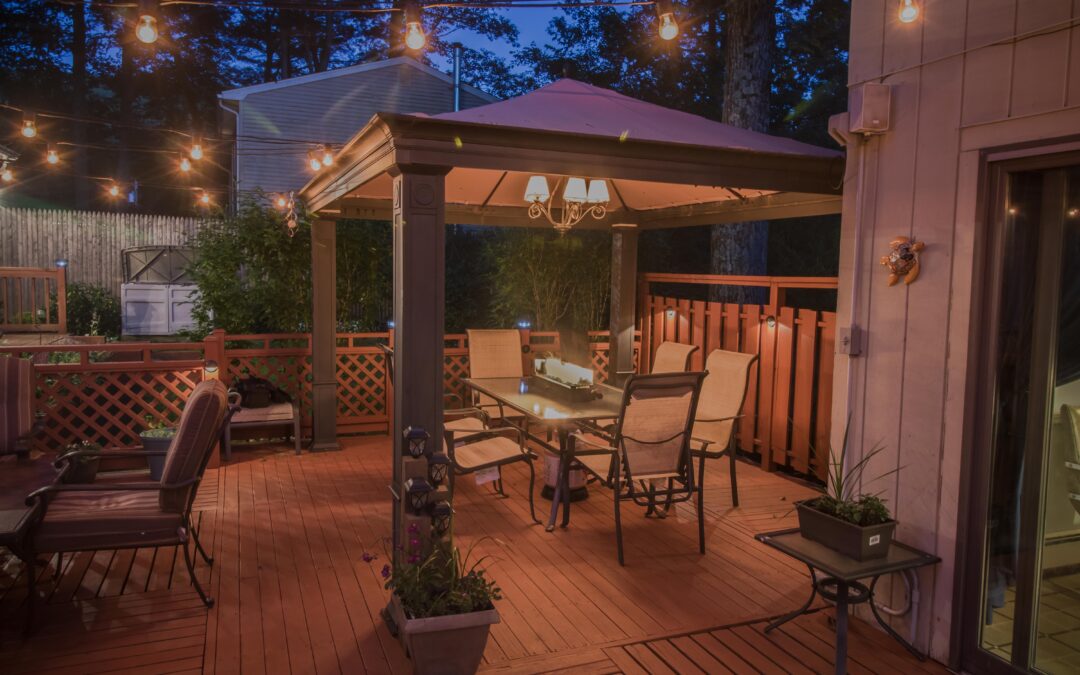Expert tips for keeping your outdoor living space fresh
By Jimmy Cordier, Owner, Pinon Painting
In addition to great weather, this community is home to beautiful forest and mountains. That being said, many residents enjoy a deck (or even two or three) as part of their outdoor living space. So if your home is built on anything other than a flat lot (likely), you probably have a deck. That means you have one of the most labor-intensive aspects of your home’s exterior maintenance: a deck top. Why? Because the finishes simply do not last a long time. If you’re lucky enough to have composite decking, this article may bore you.
When your deck is peeling, it probably means that it has solid color stain or paint on it. If there is just a little peeling, you can feather sand the edges, spot prime, and recoat it. When you have extensive peeling, it is better to sand the wood down to a bare and sound surface. At Pinon Painting, we use a floor sander much like what a floor finisher would use. The process is time-consuming; figure anywhere from 20 to 60 square feet per hour. Once it’s sanded, and you’ve set the screws deeper, the deck will be ready for two coats of solid stain again.
Some decks have a semi-transparent finish on them. You’ll know if your deck does, because you’ll be able to see the shading of the woodgrain (in other words, the finish isn’t opaque). Usually, these finishes don’t peel unless the surface was not prepped well before.
Semi-transparent is a great finish to use if you want a more natural look. But you can only expect it to last one or two years under full sun. If it has protection (shade) or is on the north side of your home, you may get two to six years out of it. Semi-transparent finish doesn’t peel because it is designed to penetrate into the wood and color it.
True oil-based semi-transparent stains are still available, but they are no longer a viable product due to Environmental Protection Agency regulations. Stay away from them. Most water based semi-transparent stains will need to have some type of oil blend added to them to make them work.
Solid color stain will last longer, but only when the deck surface is prepped very well and when the deck is more than two feet off the ground. Moisture is the enemy, whether it comes from rain, snow, or ground evaporation. If your deck boards are full of cracks, know that water will enter through them and cause peeling. Caulking the cracks is not advisable.
In the past five years or so, there have been some products introduced to the market that are designed to cover up peeling deck stains. I cannot recommend them. Most people will not put this product on heavy enough to make it work, and they are very hard to remove if you want to start over. If you decide to use one of these products, be prepared to replace your deck top when it fails. And it will fail.
Usually when your deck top is full of cracks, the wood is too dried out to hold a coating. Splits and cracks are signs that the wood has started to break down and rot. I have seen this happen on boards that are only two years old. Even today’s redwood can rot. The lumber industry is no longer getting old-growth timber. This has greatly hurt the ability to get good quality lumber here.
If you plan on staying in your home for 10 years, you may want to consider a composite decking material. Some of these can be very long lasting. And yet some of these are not lasting very well under our intense sunlight.
No deck coating will last a long time in Prescott, so resign yourself to the fact that your exposed deck tops and rail tops will need some type of maintenance every two or three years. Your railings can go for two to three times longer.

